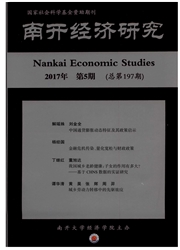

 中文摘要:
中文摘要:
限售股解禁事件本身不含有新信息,却造成显著的负向价格冲击。本文从市场微观结构入手,基于流动性的观点来解释这一现象。实证研究表明,在事件期[-10,20]内,相对于估计期,价差平均增加10%,逆向选择成分平均增加14%。这说明限售股解禁带来了逆向选择和价差的增加,导致股票流动性下降。在控制下倾需求曲线效应、投机泡沫效应以及公司业绩变化等因素后,限售股解禁的累积异常收益与价差、逆向选择的增加程度成反比,这意味着解禁后逆向选择成分和价差增加得越多,负向价格冲击越大。因此,流动性的变化是解禁事件的累积异常收益的主要原因。
 英文摘要:
英文摘要:
The lockup expiration of non-tradable shares has no new information, but there exits significant negative price impact. Liquidity view of market microstructure is applied to explain this phenomenon. The empirical results show that spreads increase 10% and adverse selection component increase 14% on average during event windows [ -10, 20] compared with estimation windows. It indicates that lockup expiration of non-tradable shares has brought an increase in adverse selection and spread which result in the decline of the stock liquidity. Controlling the effect of downward demand curve and speculative bubble and company performance changes, the cumulative abnormal returns are negative proportional to the increment degree of adverse selection and spread. This means that the more adverse selection and spread increase, the larger negative price shocks is. Therefore, changes in liquidity are the main reason for cumulative abnormal returns during the events.
 同期刊论文项目
同期刊论文项目
 同项目期刊论文
同项目期刊论文
 An extension of grey target method with multistage fuzzy linguistic evaluation under incomplete weig
An extension of grey target method with multistage fuzzy linguistic evaluation under incomplete weig Research on irrational bubbles in the stock market based on the perspective of generalized virtual e
Research on irrational bubbles in the stock market based on the perspective of generalized virtual e Modeling and simulation of stranded passengers'; transferring decision-making on the basis of herd b
Modeling and simulation of stranded passengers'; transferring decision-making on the basis of herd b 期刊信息
期刊信息
